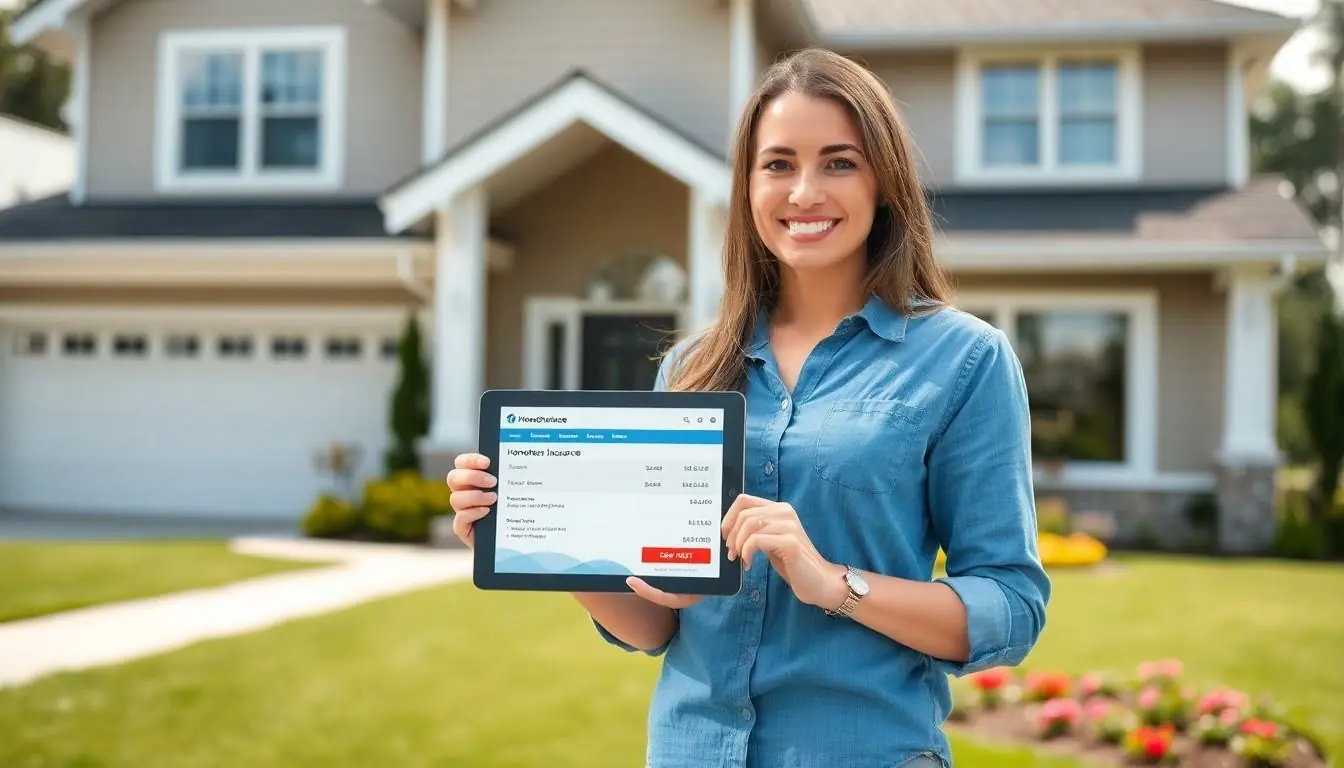In the world of finance, PMI is like that quirky friend who always shows up uninvited but ends up being the life of the party. Short for Private Mortgage Insurance, it’s a necessary evil for many homebuyers, especially those who can’t put down a hefty down payment. Understanding PMI can save you from the unexpected party crashers that come with your mortgage.
Table of Contents
ToggleOverview of PMI
Private Mortgage Insurance (PMI) plays a pivotal role in the homebuying process for buyers with smaller down payments. Understanding its implications can greatly impact mortgage affordability.
Definition of PMI
PMI is insurance that protects lenders in case borrowers default on their loans. This coverage applies primarily when a borrower puts down less than 20% of a home’s purchase price. Homebuyers pay PMI as a monthly premium, adding to their mortgage costs. Premium amounts typically range from 0.3% to 1.5% of the original loan amount annually. Lenders may also require a one-time upfront premium in addition.
Importance of PMI
PMI significantly influences a buyer’s ability to qualify for a mortgage with a low down payment. It enables homeownership for those who lack sufficient savings. By securing loans with PMI, lenders feel confident in extending credit to higher-risk buyers. Additionally, understanding PMI provisions helps buyers budget for home expenses. Clarity regarding PMI can lead to better financial planning and avoid surprises during home acquisition.
PMI Framework

Understanding the PMI framework involves recognizing its key components and processes. Each element plays a vital role in the overall effectiveness of Private Mortgage Insurance.
Key Components
Key components of PMI include the premium structure, coverage limits, and cancellation policies. Premiums typically range from 0.3% to 1.5% of the loan amount annually. Coverage limits usually protect lenders from a portion of the loss in case of borrower default, often up to 30%. Cancellation policies allow borrowers to eliminate PMI when they reach 20% equity in their home, facilitating easier financial management. Other components may involve a one-time upfront premium that can add to initial costs. Understanding these elements enables borrowers to make informed decisions about mortgage options.
PMI Processes
PMI processes encompass obtaining insurance, managing payments, and cancellation. Lenders assess the necessity of PMI based on the down payment percentage. Monthly payments, based on the loan amount and risk assessment, typically appear alongside mortgage payments. Monitoring equity growth becomes essential for borrowers aiming to cancel PMI. When borrowers meet the equity threshold, they can request cancelation through their lender, simplifying budget management. Navigating these processes efficiently contributes to financial stability during homeownership.
Benefits of Understanding PMI
Understanding PMI provides several advantages in the homebuying process. Knowledge of PMI equips buyers with critical insights into their mortgage options, financial commitments, and overall budgeting strategies related to homeownership.
Enhanced Project Management Skills
Comprehending PMI enhances project management skills essential for navigating mortgage applications. Borrowers develop a clear plan when they understand PMI costs and implications, helping them structure their finances for future home expenses. This understanding fosters better decision-making on budgeting for insurance premiums. Clarity in payment schedules allows buyers to forecast monthly expenses accurately and manage their cash flow effectively. Ultimately, strengthening these skills promotes a more organized approach to homeownership.
Improved Team Collaboration
Improved collaboration arises when buyers understand PMI and its role in securing funding. Familiarity with PMI terminology facilitates communication with lenders, agents, and financial advisors. Engaging in productive discussions about PMI empowers buyers to advocate for themselves and seek better deals. Furthermore, clarity around PMI encourages collaborative strategies among stakeholders, ensuring everyone is aligned in achieving the goal of homeownership. Effective teamwork leads to a streamlined mortgage process, reducing stress and uncertainty during home buying.
Common Challenges in PMI
PMI presents several challenges that homebuyers often encounter. Misunderstandings about PMI concepts can lead to confusion and poor financial decisions. Many buyers struggle to grasp the purpose of PMI. This insurance safeguards lenders when borrowers make smaller down payments. Some individuals mistakenly believe that PMI offers them direct protection or only benefits lenders. This misconception can create unnecessary concerns about ongoing costs.
Resistance to PMI implementation further complicates matters. Some buyers resist PMI due to perceived financial burdens. They may view PMI as an additional expense rather than a necessary tool for homeownership. Concerns about affordability and increased monthly payments discourage many potential buyers. Existing homeowners may hesitate to refinance because of PMI costs. Educating buyers about PMI’s role can reduce resistance and clarify its importance in securing home loans. Through awareness, buyers navigate the mortgage process more effectively.
Understanding PMI is crucial for anyone navigating the homebuying journey. By grasping its significance and mechanics buyers can make informed decisions that align with their financial goals. With the right knowledge about PMI premiums and cancellation processes homeowners can better manage their budgets and plan for the future.
This clarity not only empowers buyers but also fosters effective communication with lenders and agents. As they become more comfortable discussing PMI they’ll find it easier to advocate for their needs. Ultimately embracing PMI as a stepping stone rather than a hurdle can open doors to homeownership, making dreams of owning a home a reality.







